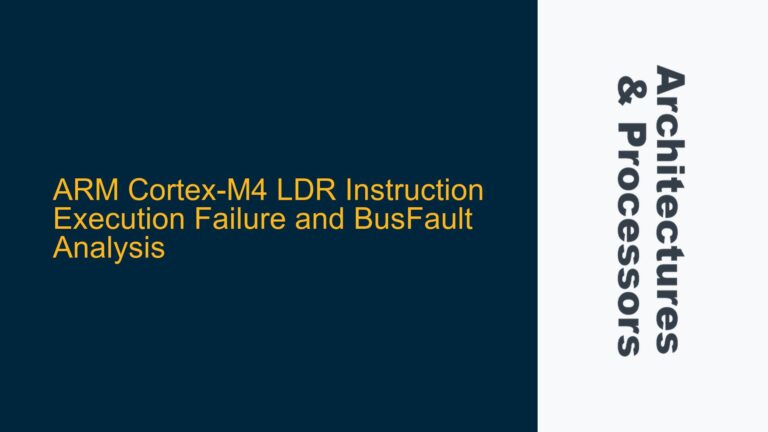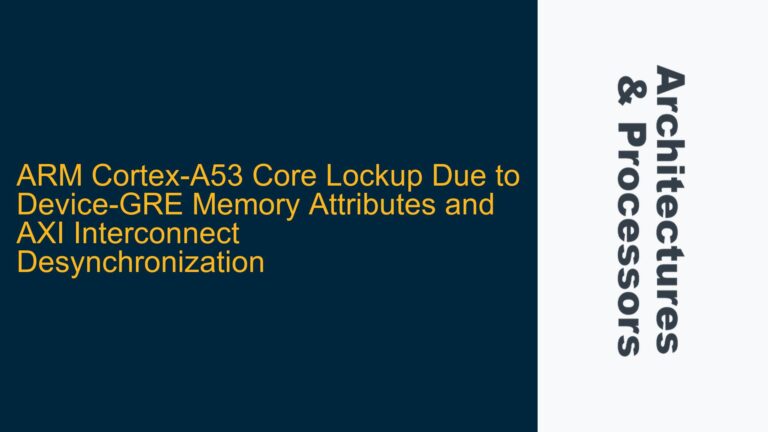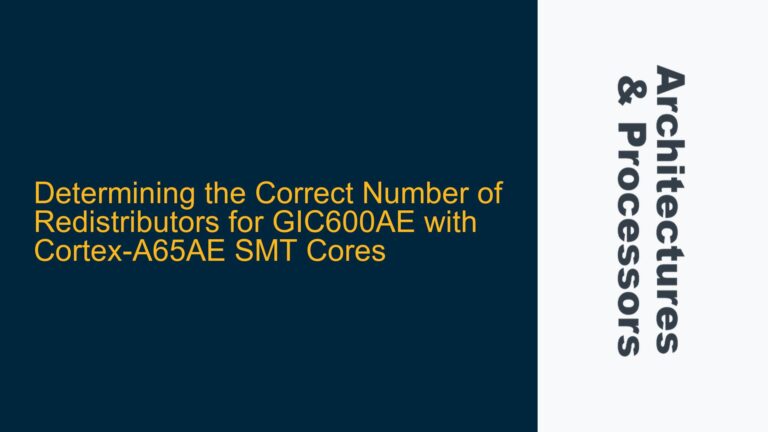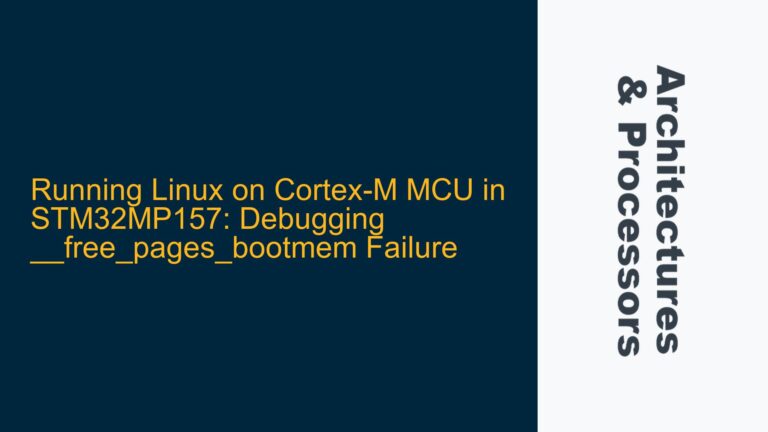ARM Cortex-M4 Shared Library Compilation and PLT Usage Errors
The core issue revolves around the incorrect compilation and linking of shared libraries for the ARM Cortex-M4 architecture using the GCC toolchain, specifically focusing on the Procedure Linkage Table (PLT) and Global Offset Table (GOT) mechanisms. The user attempted to compile a shared library (libfun.so) and link it with a main executable (so.elf), expecting the function fun to be resolved dynamically at runtime via the PLT. However, the resulting binary contained the function fun statically, and the PLT disassembly revealed unexpected register usage (ip), which is not a standard register in the Cortex-M4 architecture.
The root cause lies in the misuse of GCC flags during compilation and linking, leading to incorrect shared library generation and PLT/GOT behavior. Additionally, the disassembly of the PLT section revealed the use of the ip register, which is an alias for r12 in ARM architectures, but its presence in the PLT code raised questions about its role in the dynamic linking process.
Misconfigured GCC Flags and Shared Library Compilation
The primary cause of the issue is the incorrect use of GCC flags during the compilation and linking stages. The user attempted to compile the shared library (libfun.so) using the -c flag, which is meant for object file generation rather than shared library creation. This flag prevents the linker from generating the necessary PLT and GOT entries, resulting in the function fun being statically included in the final binary.
Furthermore, the use of the -shared flag during the linking stage (arm-none-eabi-ld) was unnecessary and incorrect for the target architecture. The Cortex-M4, being a microcontroller platform, typically does not support dynamic linking in the same way as general-purpose processors. The -shared flag is intended for systems with dynamic linking capabilities, such as Linux-based environments, and its misuse in this context led to unexpected behavior in the PLT and GOT.
The presence of the ip register in the PLT disassembly is a red herring. The ip register, also known as r12, is used internally by the ARM architecture for intra-procedure calls and is not specific to the Cortex-M4. Its appearance in the PLT code is a result of the GCC toolchain’s internal mechanisms for handling dynamic linking, but its usage in this context is not directly related to the core issue of shared library misconfiguration.
Correcting Shared Library Compilation and PLT Usage
To resolve the issue, the following steps must be taken to ensure proper shared library compilation and PLT usage for the ARM Cortex-M4 architecture:
-
Correct Shared Library Compilation: The
-cflag should not be used when compiling shared libraries. Instead, the correct command for generating a shared library is:arm-none-eabi-gcc -g -Wall -O0 -fpic -mcpu=cortex-m4 -mthumb -shared fun.c -o libfun.soThis command ensures that the shared library is properly compiled with Position-Independent Code (PIC) and includes the necessary PLT and GOT entries.
-
Proper Linking of the Main Executable: The
-sharedflag should be removed from the linking stage, as it is not applicable for Cortex-M4 targets. The correct linking command is:arm-none-eabi-ld -g -o so.elf -T flash.ld boot.o so.o -L. -lfunThis command links the main executable (
so.elf) with the shared library (libfun.so) without attempting to enable dynamic linking features that are unsupported on the target architecture. -
Understanding the Role of the
ipRegister: Theipregister (also known asr12) is used by the ARM architecture for intra-procedure calls and is not specific to the Cortex-M4. Its presence in the PLT disassembly is a result of the GCC toolchain’s internal mechanisms for handling dynamic linking. While it may appear unusual, it is not indicative of an error and does not require any specific action to resolve. -
Verification of PLT and GOT Behavior: After correcting the compilation and linking steps, the resulting binary should be disassembled to verify that the PLT and GOT are correctly generated. The PLT should contain entries for dynamically resolved functions, and the GOT should contain the necessary addresses for these functions. The disassembly can be performed using:
arm-none-eabi-objdump -D so.elf > so.listThe resulting disassembly should show that the function
funis resolved via the PLT and that theipregister is used appropriately in the context of the PLT code. -
Testing the Final Binary: The final binary (
so.elf) should be tested on the target hardware to ensure that the functionfunis correctly resolved at runtime. This can be done by running the binary and verifying that the function behaves as expected.
By following these steps, the issues related to shared library compilation and PLT usage on the ARM Cortex-M4 architecture can be resolved, ensuring that the final binary behaves as intended. The key takeaway is the importance of using the correct GCC flags for shared library compilation and linking, as well as understanding the role of the PLT and GOT in dynamic function resolution.
Detailed Explanation of PLT and GOT Mechanisms
The Procedure Linkage Table (PLT) and Global Offset Table (GOT) are essential components of dynamic linking in ARM architectures. The PLT is used to resolve function calls to shared libraries at runtime, while the GOT contains the addresses of these functions. When a function in a shared library is called, the PLT entry for that function is used to jump to the corresponding GOT entry, which contains the address of the function. This mechanism allows for position-independent code and enables shared libraries to be loaded at different memory addresses.
In the context of the Cortex-M4, the PLT and GOT are typically used in conjunction with the -fpic flag, which generates position-independent code. This flag ensures that the code can be loaded at any memory address without modification, making it suitable for shared libraries. However, the Cortex-M4 does not support dynamic linking in the same way as general-purpose processors, so the PLT and GOT are used primarily for position-independent code rather than true dynamic linking.
The disassembly of the PLT section in the provided example shows the use of the ip register, which is an alias for r12. This register is used internally by the ARM architecture for intra-procedure calls and is not specific to the Cortex-M4. Its presence in the PLT code is a result of the GCC toolchain’s internal mechanisms for handling dynamic linking, but its usage in this context is not directly related to the core issue of shared library misconfiguration.
Conclusion
The issues discussed in this post highlight the importance of understanding the correct use of GCC flags for shared library compilation and linking on the ARM Cortex-M4 architecture. By following the steps outlined above, developers can ensure that their shared libraries are correctly compiled and linked, and that the PLT and GOT are properly generated. This will result in a final binary that behaves as intended, with functions resolved dynamically at runtime via the PLT. Additionally, understanding the role of the ip register in the PLT disassembly can help developers avoid confusion and ensure that their code is correctly optimized for the target architecture.






